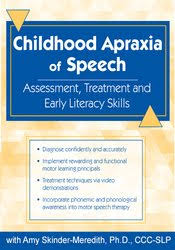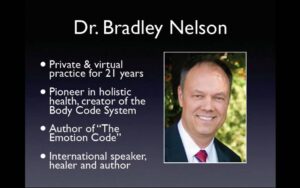You will learn fun ways to incorporate phonological awareness into speech therapy in a way that promotes a positive self-esteem.
Amy Skinder-Meredith – Childhood Apraxia of Speech Differential Diagnosis & TreatmentFaculty
Diagnose confidently and accurately
Implement rewarding and functional motor learning principals
Treatment techniques via video demonstrations
Incorporate phonemic and phonological awareness into motor speech therapy
Do you work with children who have Childhood Apraxia of Speech (CAS)?
Are you challenged with how to diagnose it, as well as how to treat it?
If you answered yes, to either question, this workshop is for you!
Join Amy Skinder-Meredith, Ph.D., CCC-SLP, an expert in motor speech disorders, and learn effective assessment techniques that will allow you to be more confident in your diagnosis. Case examples of both English and Spanish speaking children will be used to guide us in careful observations pertinent to differential diagnosis and determining the relative contribution of various factors to the child’s communication disorder. We will focus on where to begin treatment and how to provide ongoing treatment for these children. Much of the emphasis on treatment will include implementing motor learning principles along with systematic, careful construction of stimuli that is both rewarding and functional for the client. You will learn fun ways to incorporate phonological awareness into speech therapy in a way that promotes a positive self-esteem. Treatment techniques will be demonstrated through video examples and will apply to a variety of ages and levels of severity. You will also learn the latest research regarding literacy issues found in children with CAS.
List three key characteristics of CAS.
Differentially diagnose apraxia of speech from phonologic delay, dysarthria, and other communication disorders that can result in speech delay.
Explain two of the motor learning principles and how they apply to treatment of children with CAS.
Implement treatment for children with CAS using Dynamic Tactile and Temporal Cuing.
Incorporate phonemic and phonological awareness into motor speech therapy.
Know how to adapt curriculum materials for children who are unintelligible.
Would you like to receive Amy Skinder-Meredith – Childhood Apraxia of Speech Differential Diagnosis & TreatmentFaculty ?
Childhood Apraxia of Speech (CAS): An Overview
Developmental motor speech disorders
Model of speech production
Different beliefs on the underlying nature of CAS
Characteristics of CAS
Video and audio examples
Evaluating CAS
The pitfalls of misdiagnosis
Differentiate from other causes of speech disorders
Assessment techniques designed to differently diagnose
Phonologic impairment versus CAS versus dysarthria
Determine the relative contribution of apraxia, phonologic impairment, dysarthria, cognition, and language to the child’s communication disorder
Video case examples and discussion
Principles of Motor Learning and How it Applies to Treatment of CAS
Precursors to motor learning
Conditions of practice
Practice variability
Types of feedback
Treatment of CAS
Key principles that are the most important to the treatment
Clinical decision making in treatment and treatment planning
Examples of various bottom-up therapy techniques
Dynamic Temporal and Tactile Cueing (DTTC)
Treatment for the non-verbal child
Data collection and documenting progress
Incorporate Phonological Awareness and Early Literacy Skills
Key elements to address that will improve both phonological awareness and speech
Adaptive tools that are easy to use for teaching phonological awareness, speech, literacy, and language
Benefits of intensive therapy summer camp models that address motor speech, phonological awareness, early literacy skills, and language
Here’s What You’ll Get in Amy Skinder-Meredith – Childhood Apraxia of Speech Differential Diagnosis & TreatmentFaculty








